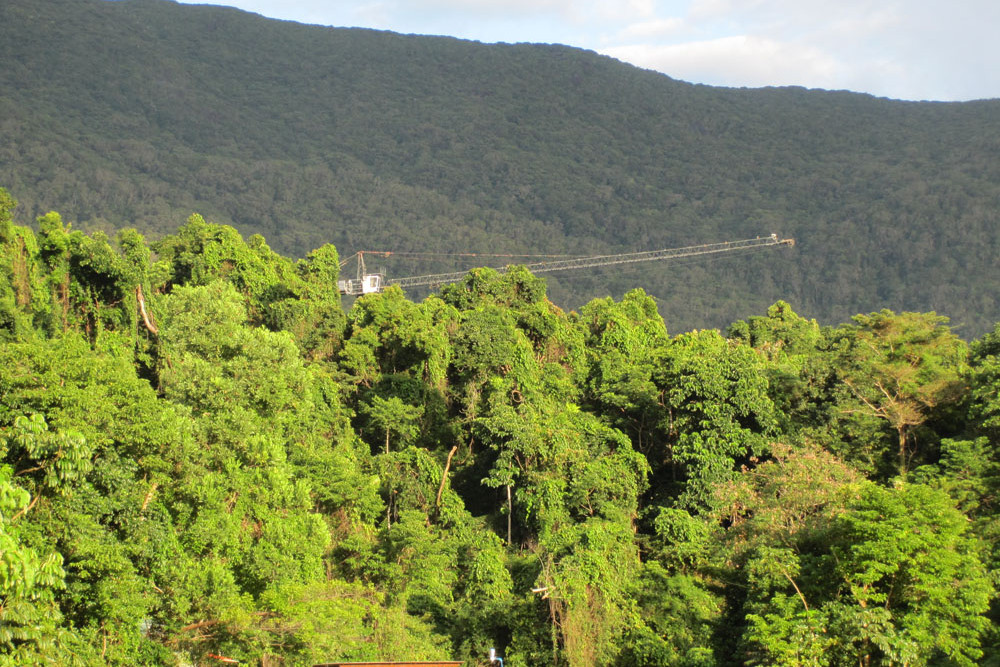Community
7 April, 2025
Canopy crane inspires story
A TRIP on James Cook University’s Daintree Rainforest canopy crane has inspired a writer to new heights in her work.

Dr Elizabeth Smyth is a writer and researcher at JCU’s Roderick Centre for Australian Literature and Creative Writing.

She said many people living and working in cities were turning to literary experiences of nature to understand a world beyond their immediate surrounds.
“Creative writers are key to developing this kind of literature. It’s especially needed now as nature is declining at rates unprecedented in human history and it can help people respond to the constant news cycle about climate change, extinctions, land clearing, wildfires and floods,” said Dr Smyth.
She said writers were constantly developing and offering new understandings of human relationships with nature.
“We all engage with nature under different constraints and from different perspectives,” she said.
“Constraints could come from the amount of available time and light or due to a disability that changes mobility or sight or some other way of being in the world.
“Our perspectives can also be influenced by the lens of our respective cultures.
“For instance, First Nations’ world views are known to include an awareness of the interconnectedness and sentience of everything; plants, people, animals, rocks, to name a few.”
To gain a new perspective of her own, Dr Smyth took a trip in JCU’s Daintree canopy crane – usually used to lift scientists 48m into the rainforest canopy to study plants and invertebrate animals.
“I have seen rainforests from above before as a view from a house, a lookout or the Skyrail Rainforest Cableway, but here the proximity was extraordinary,” she said.
“I could reach out and touch the leaves, there was a rich life of bees, butterflies, ants, flowers and fruit. The canopy was exposed, light and vibrant. This was not the dark, enclosed rainforest often employed in literature. It was another side, a bright side of the rainforest.”
Dr Smyth compared her use of the crane with the more common ways writers immerse themselves in nature and also incorporated her insights in a piece of short fiction as her character deals with a major life trauma while working in the rainforest.
“A butterfly lands on her hand. It’s brown with white spots and holds its wings vertically, the edges shifting slightly in the breeze as it walks in a semi-circle to face the wind…,” she wrote.
“The canopy crane is not only valuable in gaining hard scientific facts, but can also be used as a device to gain a new perspective and experience of the rainforest, making it a valuable resource for those engaged in creative writing too.”
Read More: Daintree

